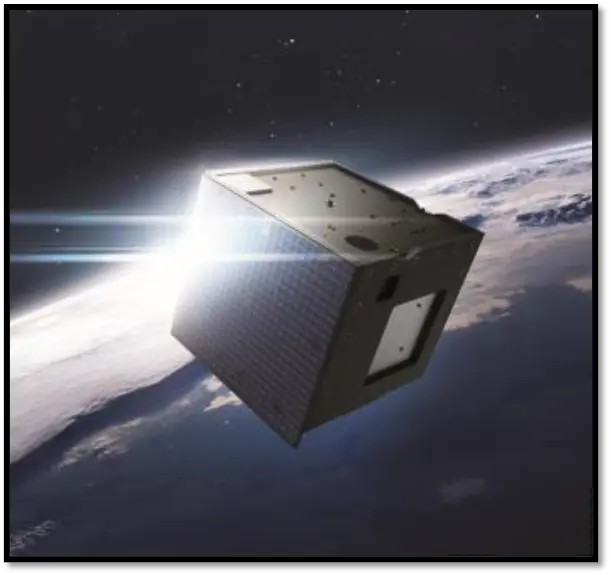After helping more than 250 U.S. Space Force Guardians and operators experiment and train with various tactics, techniques, and procedures in geosynchronous Earth orbit (GEO), the Tetra-1 satellite has completed its mission and transitioned for residual operations.
EL SEGUNDO, Calif. – Since launching the Tetra-1 satellite on November 1, 2022, the U.S. Space Force’s Space Systems Command’s (SSC) Innovation Development Branch, partnered with Millennium Space Systems, a Boeing Company, has successfully completed the Tetra-1 mission.
Tetra-1 was the first in a series of Tetra small satellites paving the way for how SSC leverages non-traditional vendors to provide on-orbit capabilities to the Space Force. As part of SSC’s Innovation and Prototyping Directorate, the Innovation Development Branch rapidly fielded Tetra-1 as a prototype vehicle developed by Millennium Space Systems into geosynchronous Earth orbit (GEO) in less than 18 months. This satellite provided crucial training for more than 250 Guardians and Airmen, enabling operators to experiment and train with various tactics, techniques, and procedures.
The capability Tetra-1 provided is critical to space operators’ understanding how to manage a small satellite, especially as SSC identifies what roles small satellites can potentially play in future USSF missions at GEO.
Throughout its lifecycle, Tetra-1 was supported a multitude of advanced training events and experimental exercises. Most notably was Tetra-1’s employment in SCARLET STAR, a testing and training campaign spearheaded by the 98th Space Range Squadron and 57th Space Aggressor Squadron of Space Training and Readiness Command (STARCOM). These exercises required coordination across all three USSF Field Commands in order to successfully complete multiple live on-orbit events.
Eighteen months after launch, Tetra-1 has now transitioned for residual operations, doubling its expected 1-year mission life. This transition was completed in less than five months by a team comprised of members from multiple organizations to rapidly execute a transfer of the Tetra-1 satellite and its ground station to a mission partner and its ground site.
As opposed to retiring the vehicle, these residual operations allow SSC to utilize Tetra-1 as a test bed to characterize satellite component lifespans for future missions. While this is the end of Tetra-1’s original mission, Tetra-1 can continue to be utilized for the foreseeable future, significantly extending the value of Tetra-1 to the USSF and DoD space community.
Space Systems Command is the U.S. Space Force’s field command responsible for acquiring, developing, and delivering resilient capabilities to protect our nation’s strategic advantage in, from, and to space. SSC manages a $15.6 billion space acquisition budget for the Department of Defense and works in partnership with joint forces, industry, government agencies, academic and allied organizations to outpace emerging threats. Our actions today are making the world a better space for tomorrow.
Image credit: Millennium Space Systems

